In the past, you would expect to see a dresser in every kitchen. Before the creation of built in kitchen units made up of cupboards, drawers and sliding storage solutions, kitchen dressers were a key furniture piece to keep kitchenware and crockery in a safe place. But what are kitchen dressers and when were they first created? We delve into their history and where you can buy one today...
What is a kitchen dresser?
A kitchen dresser is a (usually) solid wood piece of furniture used for storage. Kitchen dressers comprise of different sections, usually with drawers or cupboards on the lower section and shelves at the top. Some kitchen dressers have doors, either glass or wooden, over the shelf section, however it's common to see dressers with or without them.
What is the history of kitchen dressers?
Offering eye-catching architectural appeal, invaluable storage and a stunning place to display possessions, it’s easy to see why kitchen dressers take centre stage in so many interiors. ‘They’re an iconic piece of English furniture, but every country in Europe has their own versions too,’ says Glenn Ginger of GD Ginger Antiques.
Today, the very word ‘dresser’ conjures images of homely, rustic interiors, but that hasn’t always been the case. In medieval times the dressoir, as it was termed, stood in the grandest halls. Sometimes painted and gilded, sometimes ornately carved and draped in sumptuous textiles, this was an imposing, high-status object on which silver, plate, flagons of wine, spices and food were laid out.
In France, the number of shelves a dressoir had reflected the status of the owner. In the most stately houses steps were needed to reach the upper levels.
Fast forward to the 17th century and the dresser was a familiar feature in kitchens, as well as dining rooms and parlours. ‘They were made from oak, elm, pine, walnut or fruitwood,’ says Glenn. Many had decorative turned legs connected by stretchers supporting a row of drawers, or cupboards in the base with separate shelves on top.
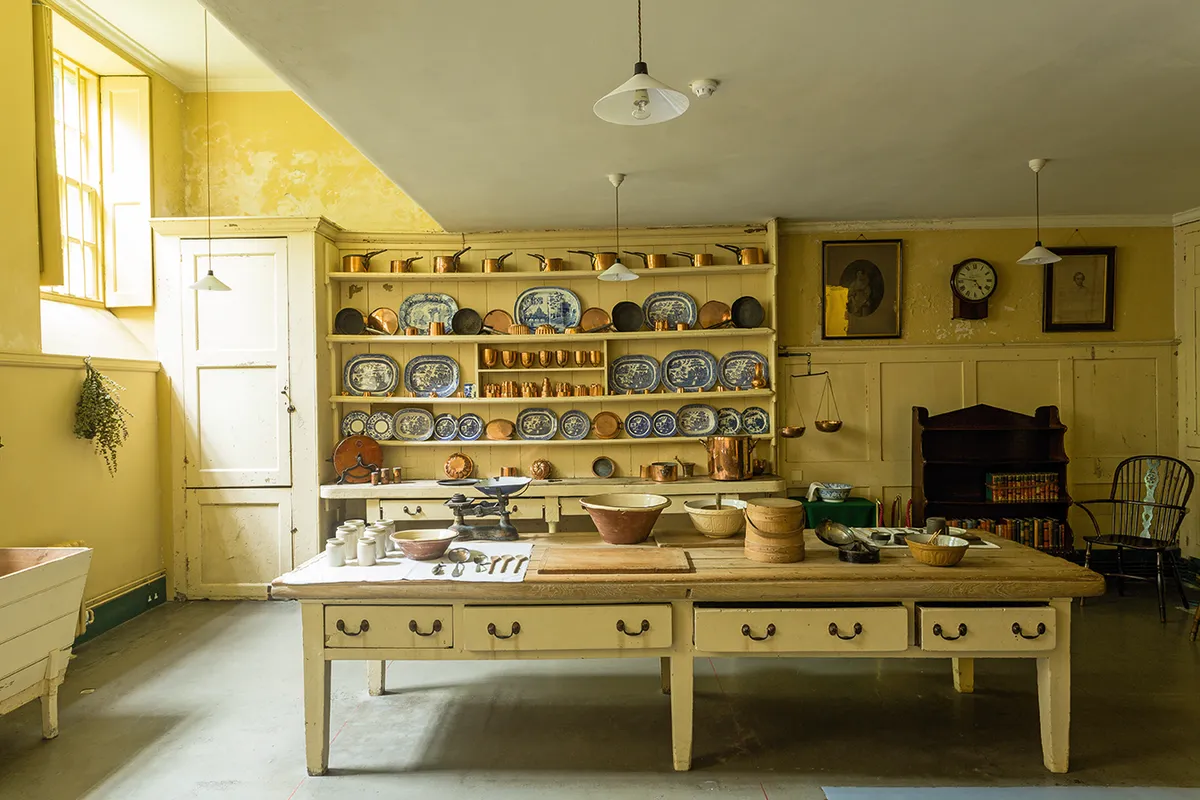
Sideboards made from imported mahogany largely replaced the dresser in the grander 18th-century dining rooms, although they were still used below stairs and in smaller homes. Designs and decoration were often rooted in the fashions of the day, but as they were made by country craftsmen rather than city cabinetmakers, forms were simplified and repeated long after fashionable furniture moved on.
Dressers continued to be made throughout the 19th and into the 20th centuries, and distinct regional variations also evolved. Although there is a caveat here: depending on where you look, the term ‘Welsh Dresser’ can be a generic description, not necessarily where the piece was made. ‘All over the country, every region had their own style, and experts are often able to identify where a dresser was made by its idiosyncrasies,’ says Glenn.
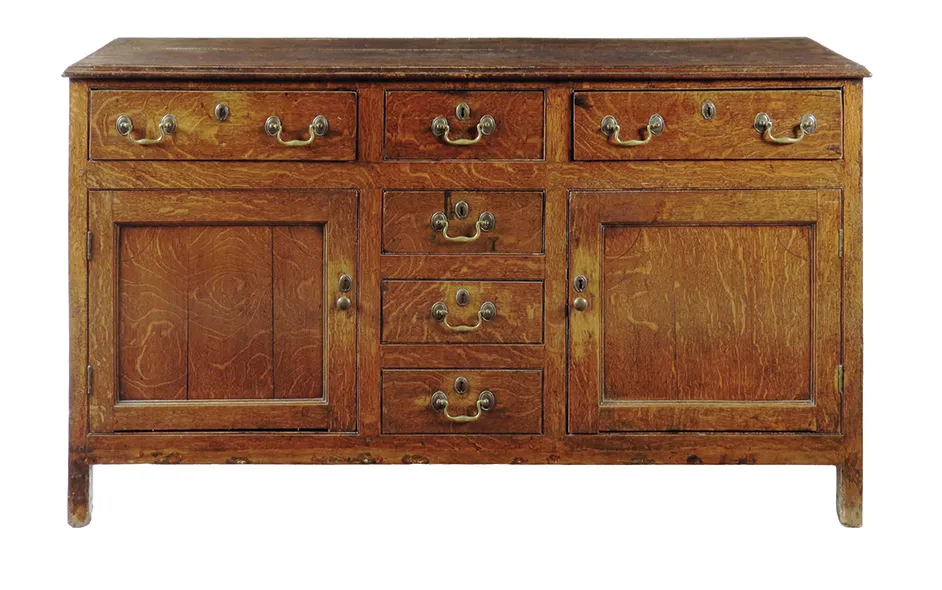
You might also like how to create a country kitchen
How much are antique kitchen dressers?
Kitchen dressers are practical pieces of furniture, and if you are buying one it should fit your needs, says Mark Yuan-Richards of Woolley & Wallis. ‘Dresser bases are sought after, as they fit with the uncluttered look. Earlier pieces, with good colour, provenance and patina, will be popular, as will distinctive later versions by leading designers or makers such as Mouseman,’ explains Mark. Painted dressers are covetable if the paint is original.
Find out more about what patina is here.
‘Value depends on age and originality. A 17th-century dresser hasn’t dropped as much as later versions and might cost £10,000 from a dealer,’ says Glenn. An 18th-century kitchen dresser could have an estimate of £1,500-£3,000 at auction, while those made in the 19th century often sell for under £1,000. ‘It’s important to work out what is original. But don’t forget that, as a dresser may have stood in a kitchen and been used every day, there should be signs of wear and tear, and repairs are to be expected.’
Kitchen dresser buying guide
Things to bear in mind when choosing your dresser
Size
Small is often more sought after than large: what fitted in a high-ceilinged Georgian kitchen may swamp a modern interior.
Condition
Check drawers, handles and bases. Restoration, replacements and large repairs may devalue a dresser, but there should be signs of genuine age.
Colour
Look for a good mellow patina of age.
Paint
Original paint is highly desirable.
Provenance
A dresser that once stood in a grand house will have extra cachet.
You might also like how to mix old and new in the kitchen
Where to buy kitchen dressers
Whether you're searching for an antique piece or a new, beautifully-made addition, the market is filled with plenty of wonderful options.
Notgrove Weathered Oak Kitchen Dresser
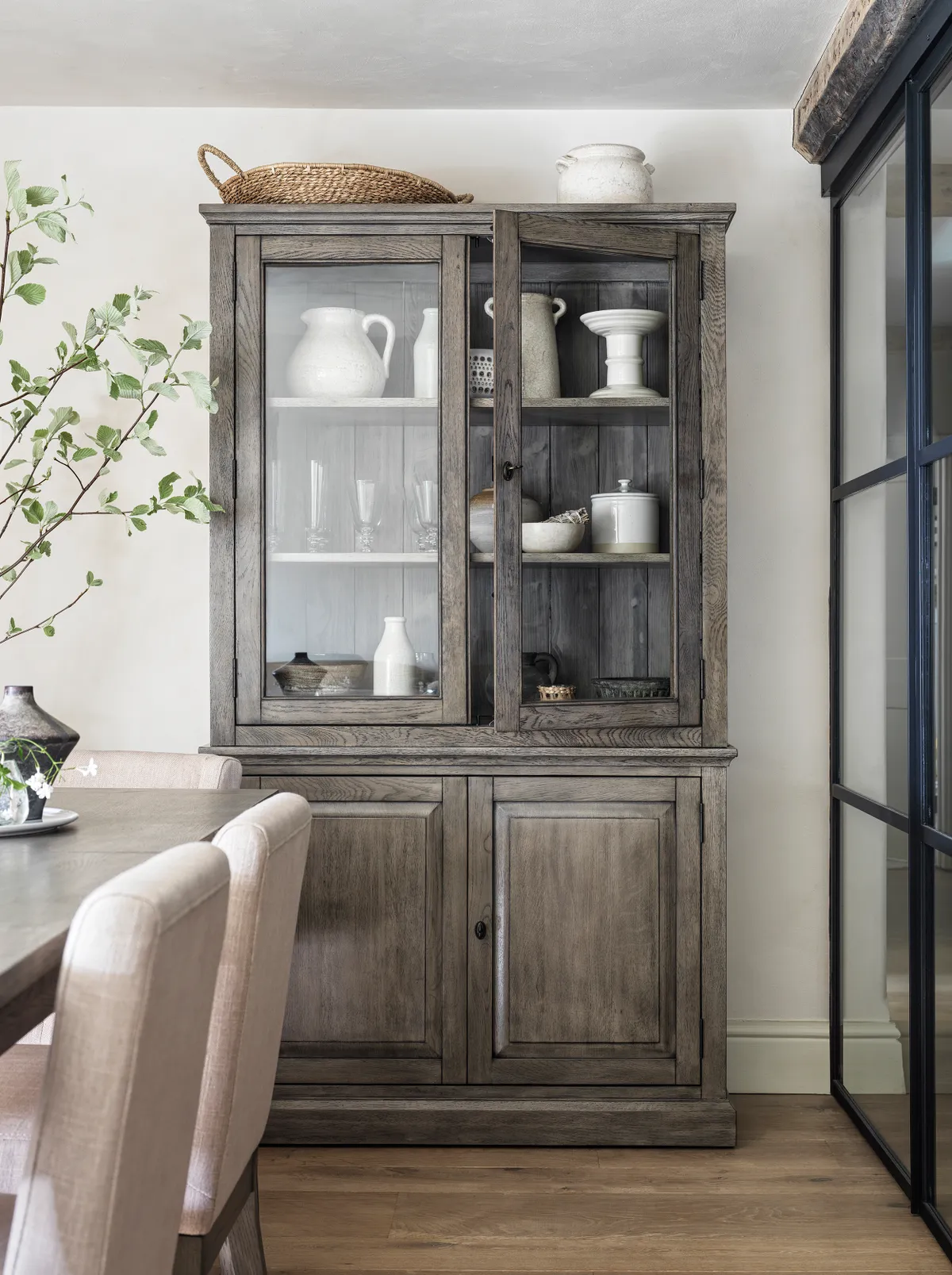
This solid oak kitchen dresser from the Cotswold Company is a wonderful example of a contemporary piece that would look fitting in an antiques-filled home. This dresser has two adjustable shelves in the top section and another hidden behind the lower doors, so you have plenty of space for storage and displaying your favourite ceramics and kitchenware.
Buy Notgrove Weathered Oak Kitchen Dresser from Cotswold Co (£999)
Country Kitchen Dresser
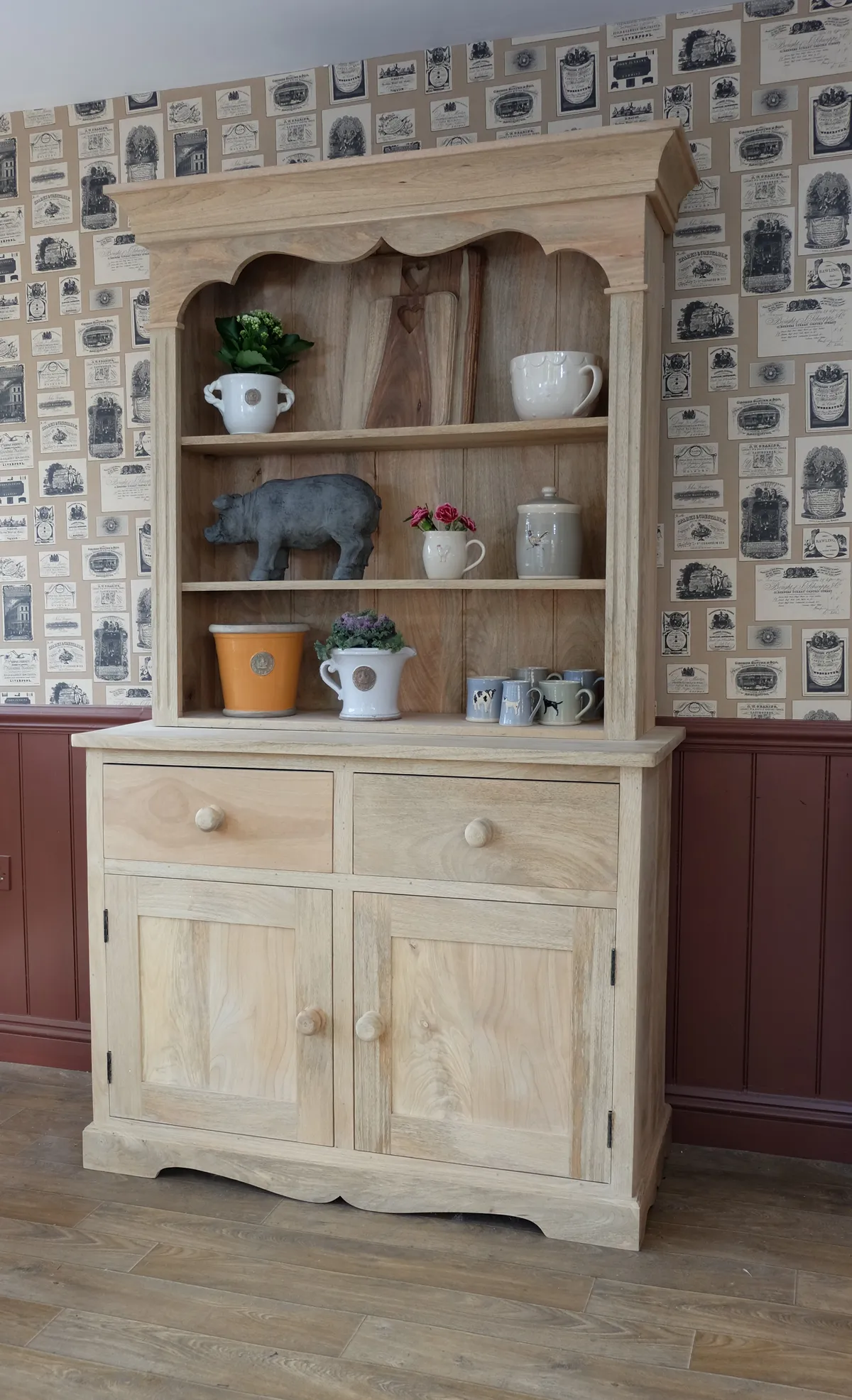
Made from mango wood, you can order this kitchen dresser in its raw wood form or painted in a selection of tones and colours. With a decorative design at the top of the dresser and draws and cupboards for storage, this is a great choice if you're looking for something more custom-made.
Buy Country Kitchen Dresser from Scumble Goosie (£1,677)
Large Somersby Kitchen Dresser
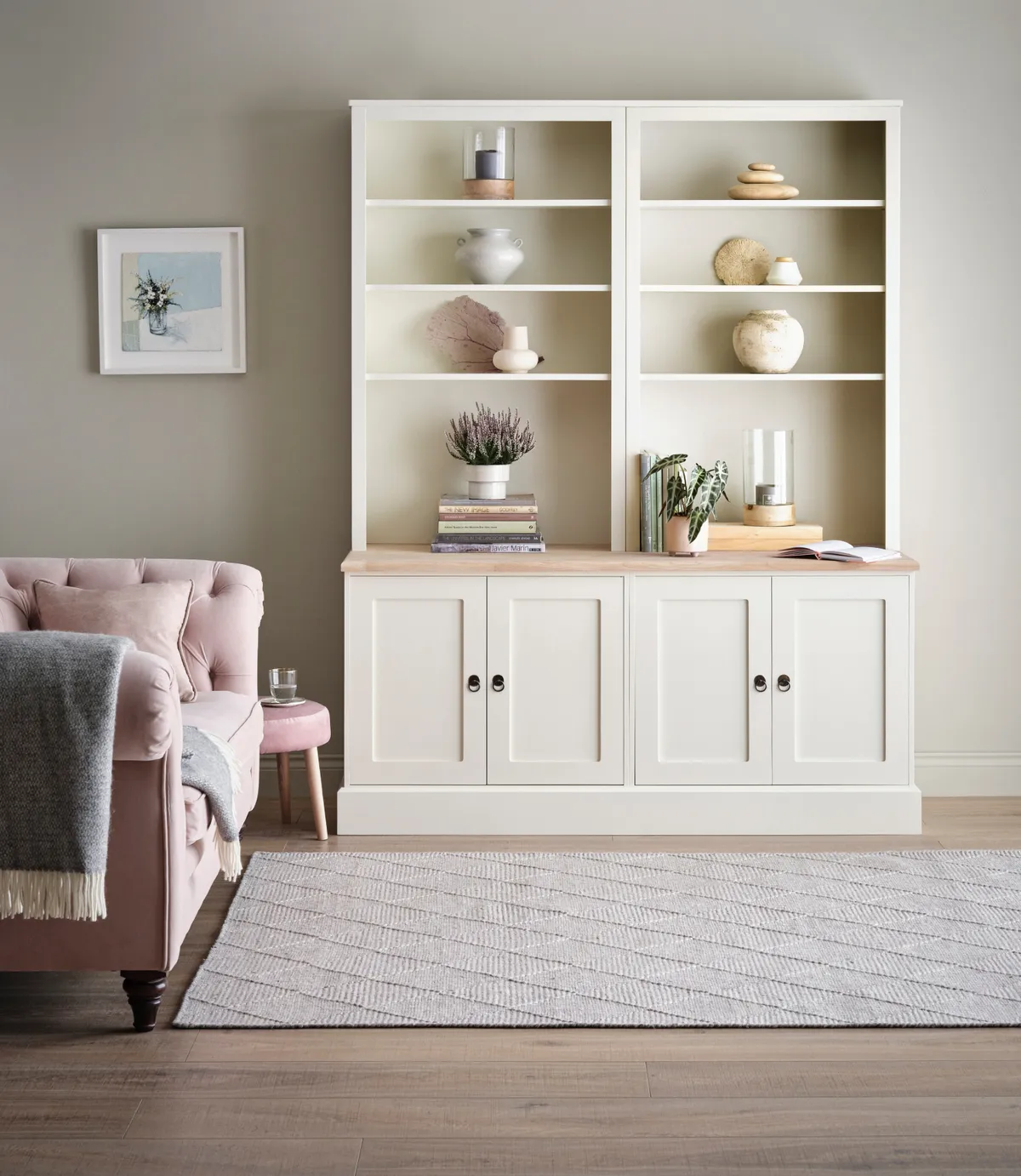
For something classic with clean lines, this kitchen dresser from The Dormy House is a wonderful choice. You can order this in one of nine different colours, plus, you can even choose which door handles you'd like, so you can really make it match the rest of your kitchen style.
Buy Large Somersby Kitchen Dresser from The Dormy House (from £1,560)
